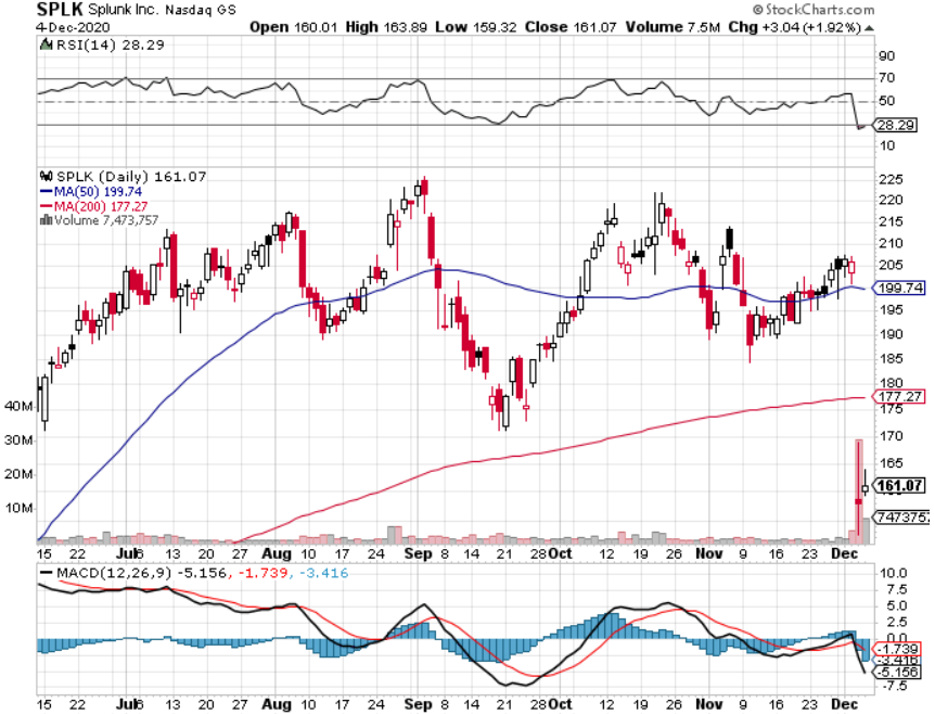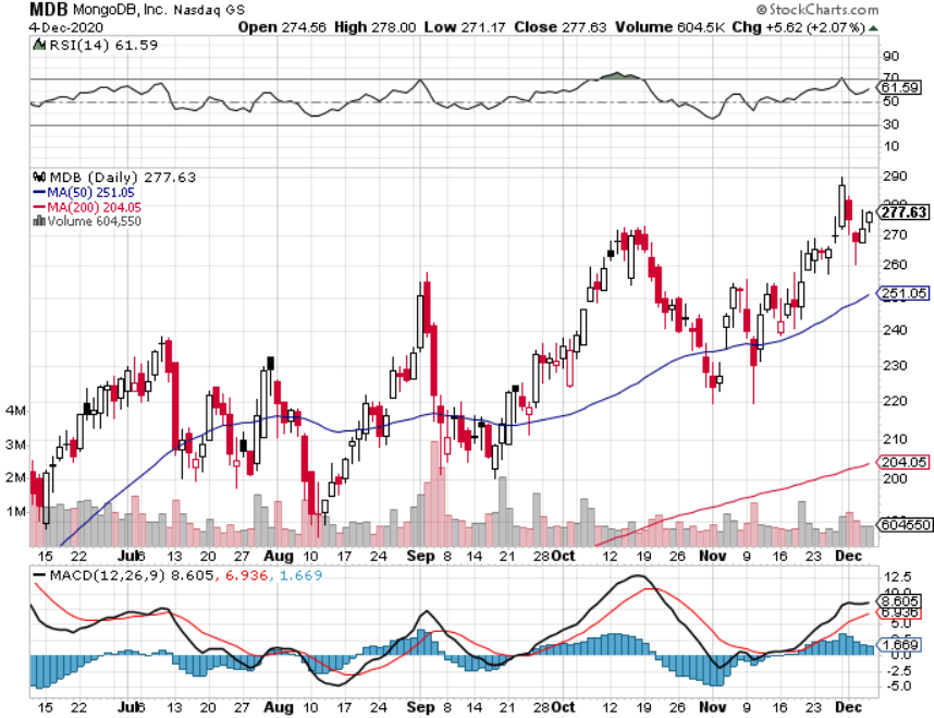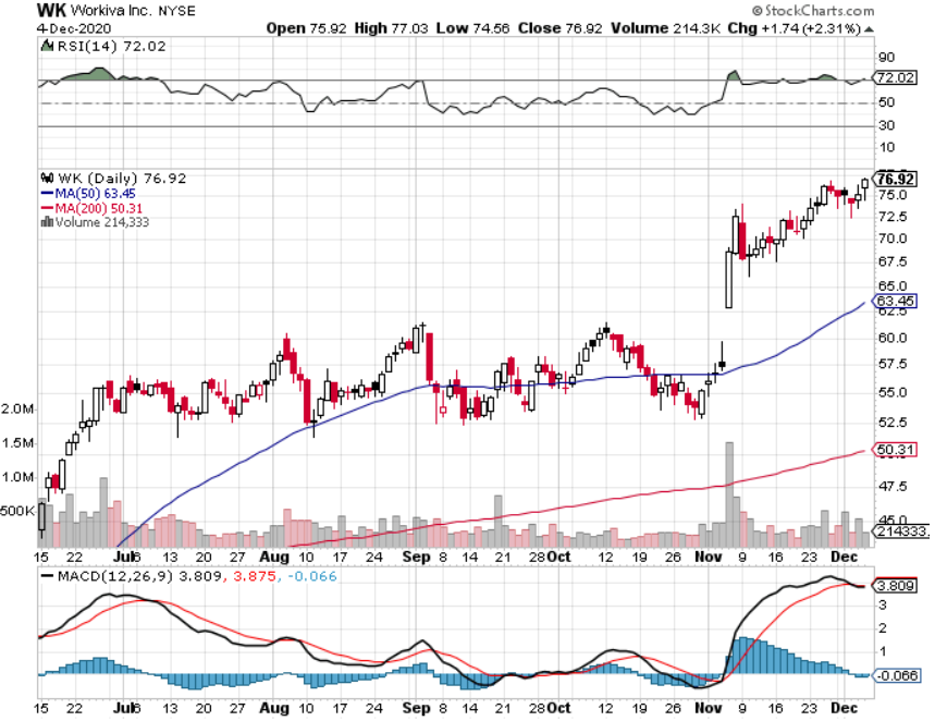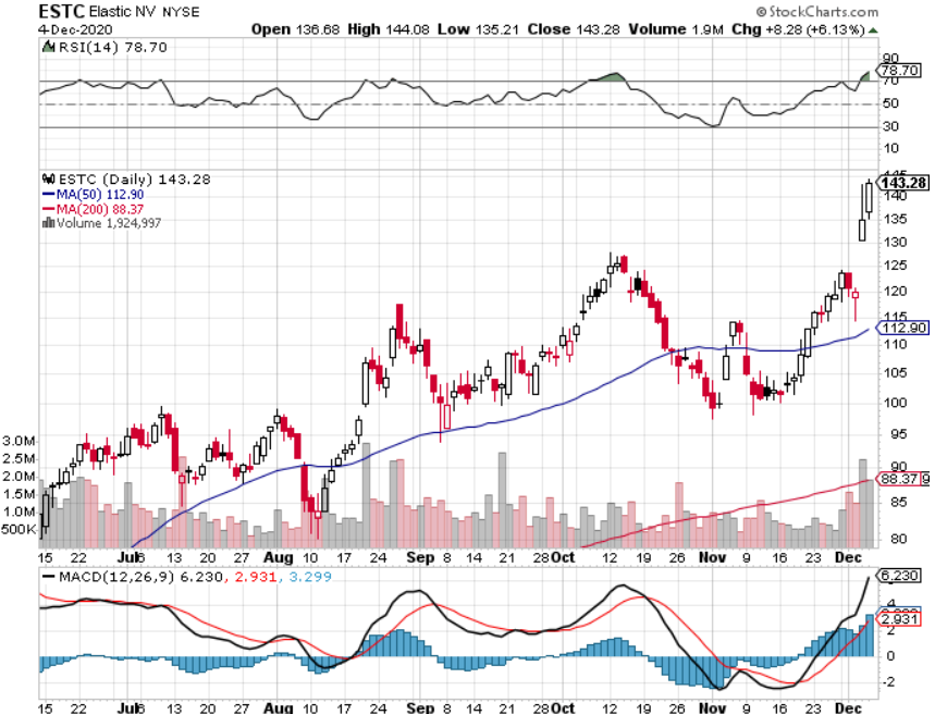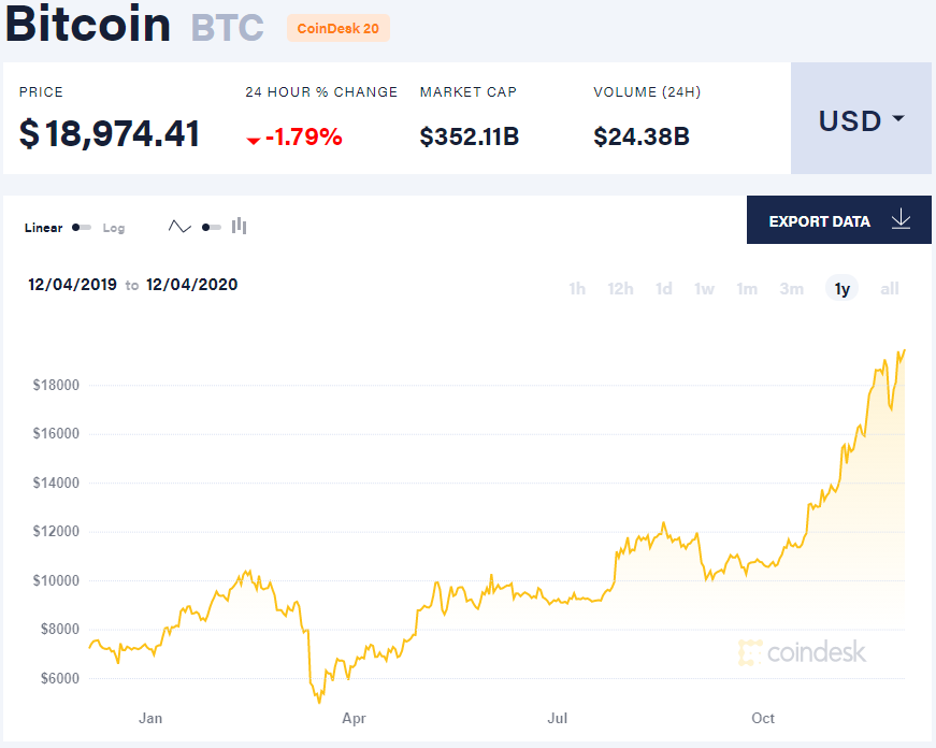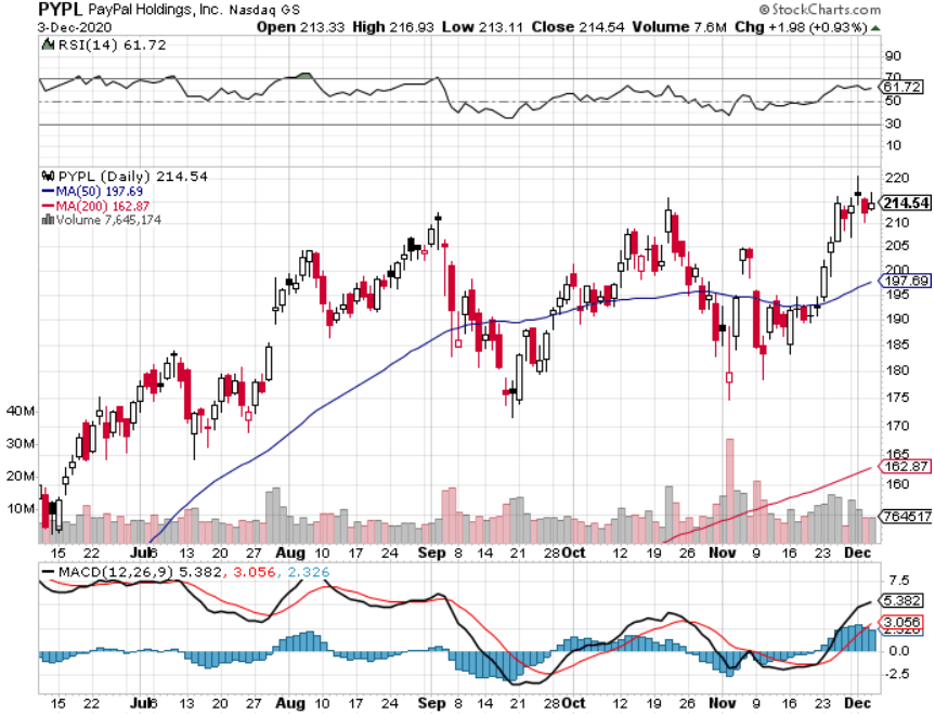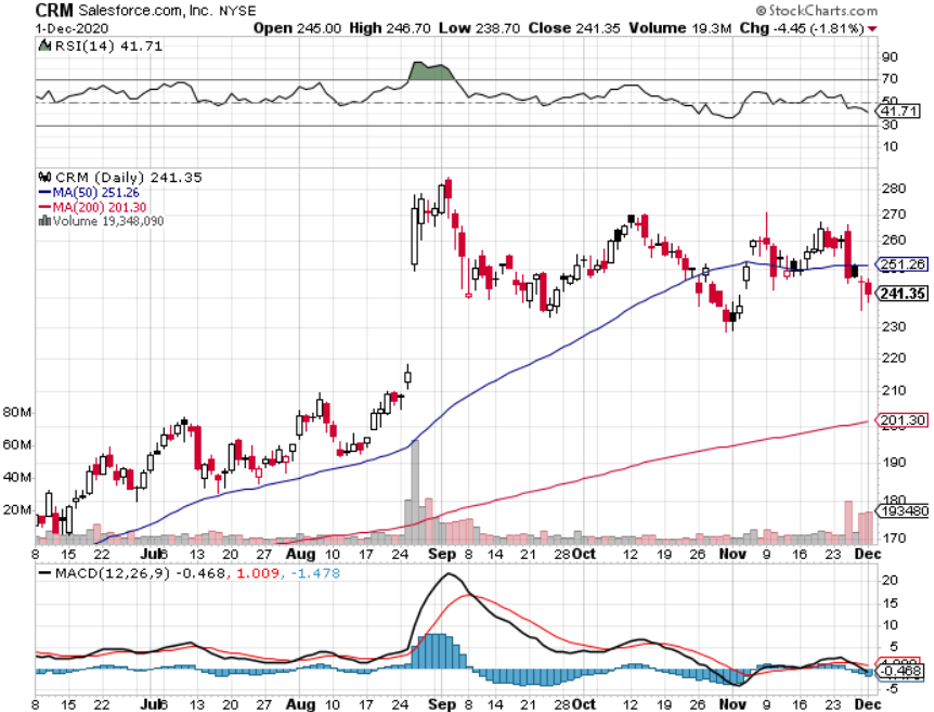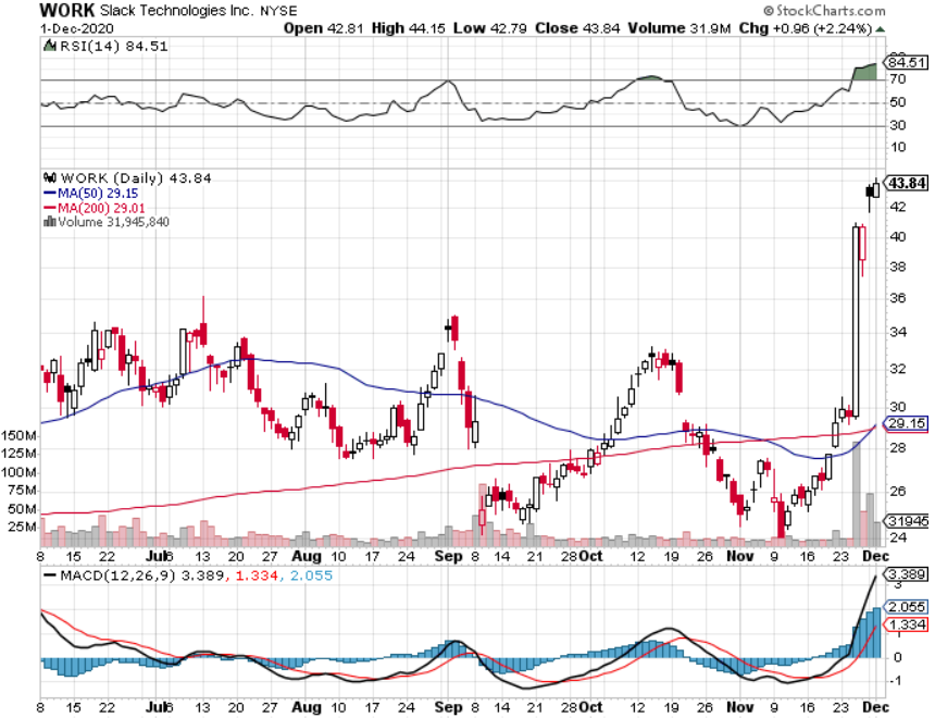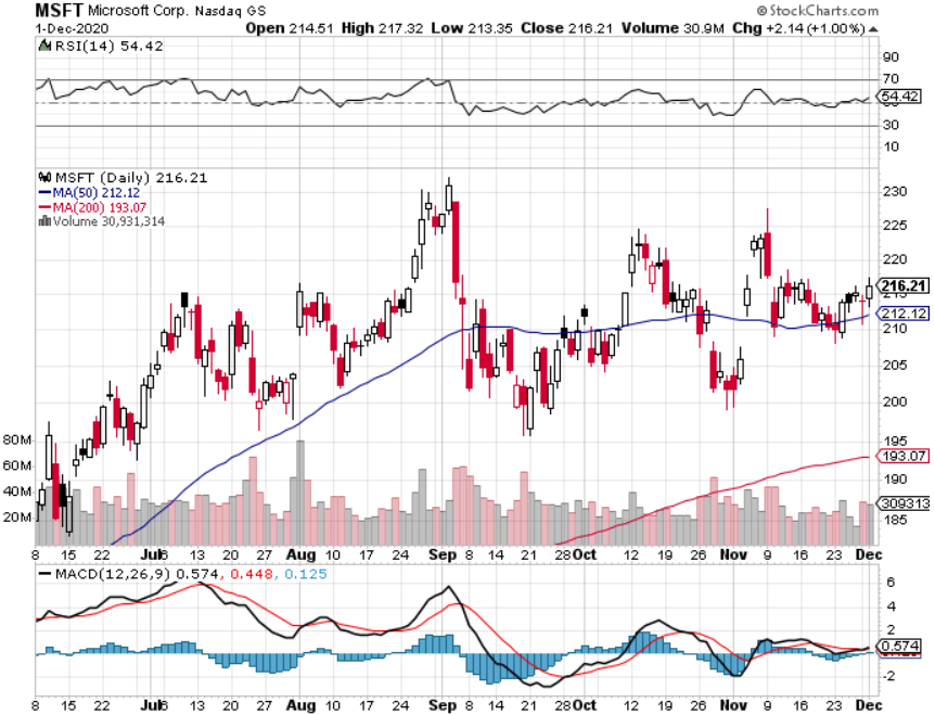“AI doesn’t have to be evil to destroy humanity – if AI has a goal and humanity just happens to come in the way, it will destroy humanity as a matter of course without even thinking about it, no hard feelings.” – Said Founder and CEO of Tesla Elon Musk
Mad Hedge Technology Letter
December 7, 2020
Fiat Lux
Featured Trade:
(THE OPPORTUNITIES IN BIG DATA)
(SPLK), (WK), (MDB), (ESTC)
It’s all great knowing about the cloud, but to understand the cloud more deeply, and how it affects investment trends, we need to talk about Big Data.
This is epitomized by massive data troves.
That avalanche of data on a daily basis coming from an ever-growing variety of sources is now the genesis of all and any corporate decisions.
Data sets are now decoded by processing software tools that capture, process, and curate in a timely fashion.
Let’s take an ecommerce business, their data creation and gathering process comes from sources that include wholesale or retail transactions.
Other companies look into the shipping, audio and video logs, text messaging, internet search queries, cookies, satellite imagery, and GPS data, as well as stock-market activity and financial transactions. Data is also flooding in from the Internet of Things.
The process of analyzing data sets from numerical evidence is now coined data analytics.
Extracting all manner of data in order to draw out conclusions about the information is the competitive advantage of today. In addition, it uncovers undiscovered themes or unknown correlations within the data, or unearths emerging market trends leading companies to better understand customer preferences.
The data analytics’ industry is growing by leaps and bounds, fueled by market demand for systems that tolerate the intense requirements of Big Data.
Which up and coming, second-tier tech companies have cornered the best data analysts that could boost their stock price over the medium term?
I would include a short list of firms like MongoDB (MDB), Elastic (ESTC), Workiva (WK), and Splunk (SPLK).
Big data companies can focus on various areas, including data mining and cleaning, data analysis, machine data, visualization, and storage.
The trend has also fueled an expansion in new Big Data IPOs include Alteryx (AYX), Cloudera (CLDR), Talend (TLND), and New Relic (NEWR). Splunk was among the first to come public.
Investors who want a data analyst army to drive stock performance should look no further than these companies.
Although they don’t harness the type of intellectual property (IP) of monopolists such as Apple or Google, they add specific functions to the tech industry and are rocket boosters to many business models that already are benefiting from massive secular tailwinds.
Let’s dive into a few data-based firms that I think are worth your time and attention.
MongoDB (MDB)
MongoDB provides an open-source database platform for businesses, with a subscription-based software-as-a-service business model.
MongoDB's iconic flagship application can do pretty much anything in a relational database from Oracle and the difference between relational and NoSQL databases is that the relational model is rigidly defined and difficult to change.
MongoDB's software is more flexible than traditional database models, which allows developers to complete tasks more efficiently.
NoSQL databases are easy sells in today's software development sector, so MongoDB's sales are skyrocketing. The company isn't profitable yet because management has optimized the business model for maximum top-line growth.
The company burns cash but compensates for that with elevated growth rates. MongoDB’s underlying shares are up around 90% YTD.
Splunk (SPLK)
Splunk provides intelligence software designed to aid search, correlate, analyze, monitor, and report on data in real time. The software is deployed to analyze vast amounts of historical information. They specialize in machine-data applications.
Splunk stock took a big hit when the company reported third-quarter results, and the natural consolidation of many big data stocks that have come too far, too fast will offer optimal entry points for tech investors.
Splunk reported lower-than-expected bookings and annual recurring revenue due to a drop in the rate of closing deals, especially large-sized transactions.
Poor revenue forecasts and deal weakness could be a great buying opportunity.
Elastic (ESTC)
Elastic harnesses a set of software products that ingest and store data from various sources and formats, as well as perform search, analysis, and visualization.
The company uses a cloud-based software-as-a-service business model. It has 12,900 subscribers, which accounted for 93% of total revenue in the quarter.
Elastic expects fiscal third-quarter sales in the range of $145 million to $147.0 million, above Wall Street views of $139.8 million.
Elastic stock is up over 120% this year validating the use of big data tools.
I believe this is a great buy the dip stock if shares come back down to the $120 range.
Workiva (WK)
Workiva offers a cloud-based and mobile-enabled platform used by companies to collect, analyze, and manage business data. Customers use Workiva's software to streamline complex business and reporting processes by connecting teams, documents, and data from initial sources to final reports.
The company offers Workiva platform that offers controlled collaboration, data linking, data integrations, granular permissions, process management, and full audit trail services.
They specialize in data integration and preparation tools that enable customers to connect data from enterprise resource planning, governance risk and compliance, and customer relationship management platforms.
Revenue for its third quarter climbed 19% to $88 million. It has more than 3,580 customers. The company also raised its guidance for its fourth quarter.
The underlying stock is up around 75% this year and the company is on the cusp of producing positive earnings for the first time.
Aside from Splunk boasting annual revenue of $2.5 billion, the other three are diminutive in annuals sales.
Elastic, MongoDB, and Workiva only procure annual sales of less than half a billion so the jury is still out on them, where Splunk is more grandfathered into their position in the tech ecosphere.
My pick of the bunch is Workiva because their profitability and margins are trending in a better direction than MongoDB and Elastic, but I do believe that the secular trend of digital migration will help all of these companies even if management isn’t being as efficient as they could be.
“My aim is to develop affectionate robots that can make people smile.” – Said CEO of Softbank Masayoshi Son
Mad Hedge Technology Letter
December 4, 2020
Fiat Lux
Featured Trade:
(THE NORMALIZATION OF CRYPTOCURRENCY)
(BITCOIN), (SQ), (PYPL)
The price of Bitcoin mushrooming to an all-time peak of just south of $20,000 is a seminal moment for digital currencies.
Although the Mad Hedge Technology Letter rarely wades into these types of waters, crypto must be addressed because the recent legitimization of digital currencies cannot be diminished.
That’s not to say they will be the de facto monetary instrument tomorrow morning, but the concept of digital currencies and development of it this year has been far and wide-reaching.
The price of Bitcoin has gained more than 170% this year, with most of the price action coming since September.
Why has it been so successful?
Riskier assets are back in vogue as the unprecedented fiscal and monetary stimulus means there are fewer places to achieve any sort of proper yield.
Then consider recent mainstream acceptance that is coming to full fruition such as payment companies including PayPal (PYPL) and Square (SQ) which have recently incorporated digital currencies into their business model.
Government and Central Banks are the largest reason for the short-term elevated attention as their fumbled virus response has led to lockdowns and a massive loss of trust in their leadership.
The global debacle has led many investors to search for alternative routes to fiscal safe havens seeking shelter from rapidly increasing central bank quantitate easing and the rampant asset inflation that everyone agrees is already taking place.
Much of the money printing has not been done responsibly with mainly only corporations and their offshoots benefiting from an unprecedented, pandemic-marred market reality in which stocks are trading at nosebleed prices while bond yields are hovering around zero.
Moving forward, the risk of protests, revolution, and war has increased significantly in large swaths of the developed and undeveloped world and higher societal and systemic risk makes the idea of digital currencies that are out of the reach of taxable authorities more conducive to storing savings and for-profit trading.
Bonds have no yield EVERYWHERE at this point and keeping wealth in cash is dangerous.
Investors used to put their money in gold, but gold is going down because it is being replaced by digital gold called bitcoin.
It was only in 2017 when the bitcoin surge lost momentum and caused the price of Bitcoin to lose half its value within days of reaching an all-time high.
What is the difference today?
Today’s bull market is resting upon more solid foundations and in 2017, the bubble was artificially propped up by Initial Coin Offerings (ICOs), which saw charlatans sell mostly worthless new currencies to the naïve retail investor.
It’s true that today, Bitcoin is regulated tighter translating to less dumb money circulating in the system.
Bitcoin’s foundations are also more firm in 2020 because its adoption base has increased meaning more people have skin in the game and aren’t going to dump the asset at the first sign of consolidation.
A company called Grayscale has been quite intelligent in pitching Bitcoin as an alternative to gold and selling it to millions of millennial investors in the form of shares.
The large avoidance of corporate bitcoin adoption has changed 180 degrees in the year of the pandemic with PayPal announcing last month that it will soon allow users to buy cryptocurrency within its app.
Next year, PayPal will allow users to draw from cryptocurrency accounts to pay for goods and services at 28 million merchants that use the company's platform.
PayPal will also enable customers to use Venmo, its popular peer-to-peer payment service, to buy and shop with cryptocurrencies.
CEO Dan Schulman implied that the size of the waiting list for last month's crypto offering for access to crypto was two or three times as great as what the company anticipated.
Obviously, this is setting up a shortage of bitcoin in more corporates needing access to its supply.
Schulman also argued that companies and central banks are experimenting with cryptocurrencies and the utility of digital wallets.
“Digital wallets are a natural complement to all forms of digital currency,” said Schulman, adding that PayPal is in close talks with central banks and regulators to explore new uses for these wallets.
Schulman said PayPal views cryptocurrency systems as cheaper and more efficient than ACH, which is the network that supports the existing banking system.
He also said that the current financial system is “not working” for many low-income people meaning that there is a huge untapped audience that would find crypto more useful.
Last week, cryptocurrency giant Coinbase announced a debit card that can be used at ordinary merchants, while MasterCard in September announced a service to let central banks test out digital currencies.
There are strong rumblings by investors that gold will eventually be displaced by “digital gold” and abandoning the sinking ship early could lead to all gold investors diverting their capital into bitcoin.
This would massively expand the user base as well and the valuation could be 25 times higher than it is today.
Institutions have taken the baton from the retail-driven pandemonium of 2017 and in 2020, many liquid investors will look at any crash or dip in bitcoin as a buying opportunity.
What a change from just 4 years ago!
I hate to say it, but as central banks go even more off the deep end to prop up a decaying financial system riddled with conflicts of interest, the price of bitcoin will gain in strength resulting in much higher prices.
Not only that, but the adoption rate could also go into overdrive opening up pathways for secondary coins like Ethereum to gain widespread adoption as well.
At this point, it appears that this overarching trend is unstoppable, and in the future, historians will look at this 2nd bull run to $20,000 in 2020 as just another data point in its meteoric rise to jaw-dropping prices of $30,000 then $40,000.
“Bitcoin is probably rat poison squared.” – Said Legendary U.S. Investor Warren Buffett
Mad Hedge Technology Letter
December 2, 2020
Fiat Lux
Featured Trade:
(SALESFORCE TRIES TO STAY RELEVANT IN THE CLOUD)
(CRM), (WORK), (MSFT), (GOOGL)
This was basically a deal they had to do even though I believe Salesforce (CRM) massively overpaid for Slack (WORK).
The other option would be to fall even further behind Microsoft (MSFT) who has hit a home run with their own in-house iteration of Slack-ish software called Microsoft Teams.
In fact, this is the biggest acquisition in Salesforce’s software history and purchasing the software developer Slack for over $27 billion marks a new chapter in their history.
Through a combination of cash and stock, Salesforce is purchasing Slack for $26.79 a share and .0776 shares of Salesforce.
Other big software deals such as IBM’s $34 billion purchase of Red Hat in 2018, the largest in its history, followed by Microsoft’s $27 billion acquisition of LinkedIn in 2016 are also noteworthy.
Last year, the London Stock Exchange agreed to buy data provider Refinitiv for $27 billion, though the deal has yet to be cleared by European regulators.
Salesforce has decided to grow via M&A as CEO Marc Benioff hopes to stave off a growth downturn by pre-emptively addressing these potential problems.
His goal is to get more investors on board for the long haul.
In the short term, the jury is out on whether Salesforce can “grow into” the high valuation which they agreed to pay for Slack.
Other deals made by Salesforce are when the company spent $15.3 billion on data visualization company Tableau in 2019 and, a year earlier, they captured MuleSoft for $6.5 billion whose back-end software connects data stored in disparate places.
The future of enterprise software is transforming the way everyone works in the all-digital, work-from-anywhere world and Salesforce will be one of the leading voices in how this plays out.
Don’t forget that Salesforce started the enterprise cloud revolution, and two decades later, they are still tapping into all the possibilities it offers to transform the way we work.
For Slack, this is a major victory because they had begun to see the writing on the wall with two uninspiring earnings reports which signaled that Microsoft was having their cake and eating it too.
For Salesforce to pay a 30%-40% premium for Slack reveals the sense of desperation permeating into the ranks of Salesforce management.
Another takeaway is that enterprise software is putting their money where their mouth is convinced that the shelter-in-home economy will last long after the brutal public health crisis is over.
I tend to agree with this diagnosis, but I don’t agree with overpaying for Slack at the degree in which they did.
However, the climate of cheap rates and high liquidity feeds into the normalcy of overpaying for quality assets.
What’s so bad about Slack?
Slack has blamed the downturn in fortunes on some of its small business customers being hurt by the pandemic.
The company has loosened contract structures and extended credits to help them out which is a major red flag.
The slowdown has only fueled nervousness that Microsoft (MSFT) Teams’ ascent is weighing on Slack’s growth potential.
Teams now has more than 115 million users while Slack has a fraction of that, despite having the edge in the minds of most in terms of user interface.
Slack’s slowing growth, in turn, hurt its sentiment and ultimately its stock price.
Salesforce could have acquired Slack for a discount in a year or two, but by that time, Salesforce would be left in the dust.
Salesforce had to act with urgency even if Slack still expects to post a net loss this fiscal year. It’s unclear when Slack will turn a profit-making company even less attractive.
Salesforce will need to subsidize Slack’s losses for the time being.
What’s in it for Salesforce?
Salesforce could help easily scale up Slack to more high-paying corporate customers in a major challenge to Microsoft Teams which would vastly help Slack’s margins.
There are also numerous synergies in being under the Salesforce umbrella which would only strengthen the profit potential of the communications platform.
By acquiring Slack, a business chat service with over 130,000 paid customers, Salesforce is bolstering its portfolio of enterprise applications and filling out its broader software roster as it seeks additional growth engines.
Salesforce obviously believes that the sum of the parts will be greater than each individual segment and I agree.
Salesforce’s annualized revenue topped $20 billion in the fiscal second quarter, with growth of 29%. But the forecast for the full year of 21% to 22% growth would represent the company’s slowest rate of expansion since 2010.
Microsoft and Salesforce are direct rivals at this point and Salesforce is the dominant player in customer relationship management software, where Microsoft is a distant challenger. Both companies tried to buy LinkedIn, the professional networking site, but Microsoft was the ultimate winner.
The company’s core Sales Cloud product for keeping track of current and potential customers delivered $1.3 billion in revenue, up 12% year over year and that’s simply not good enough to be considered a “growth asset.”
Many investors won’t bite at the bid unless a burgeoning tech company is north of 20% and preferably plus 30%.
Salesforce will now embark on a narrative of engineering growth to fit its investors’ preferences, but I do hesitate to think that this will most likely mean continuing to overpay for software companies.
Salesforce does have the resources to absorb this pricey endeavor but is it sustainable when the likes of Microsoft, Google, and so on are competing for the same assets?
Does this mean that Twitter would be $60 billion in today’s climate?
That’s a scary thought.
M&A could disappear soon from tech because the valuations might reach some sort of peak that even cash-rich Silicon Valley firms might balk at.
Yes, we are getting to that stage of tech. Tech is becoming a luxury.
In the short term, buy Salesforce’s dip as some investors will sell as a way to signal to Salesforce that they aren’t happy with their capital allocation strategy and ultimately this isn’t a guarantee of adding growth and could possibly backfire in Benioff’s face.
“There are a lot of politicians who are just obstructionists.” – Said CEO of Salesforce Marc Benioff
Legal Disclaimer
There is a very high degree of risk involved in trading. Past results are not indicative of future returns. MadHedgeFundTrader.com and all individuals affiliated with this site assume no responsibilities for your trading and investment results. The indicators, strategies, columns, articles and all other features are for educational purposes only and should not be construed as investment advice. Information for futures trading observations are obtained from sources believed to be reliable, but we do not warrant its completeness or accuracy, or warrant any results from the use of the information. Your use of the trading observations is entirely at your own risk and it is your sole responsibility to evaluate the accuracy, completeness and usefulness of the information. You must assess the risk of any trade with your broker and make your own independent decisions regarding any securities mentioned herein. Affiliates of MadHedgeFundTrader.com may have a position or effect transactions in the securities described herein (or options thereon) and/or otherwise employ trading strategies that may be consistent or inconsistent with the provided strategies.




